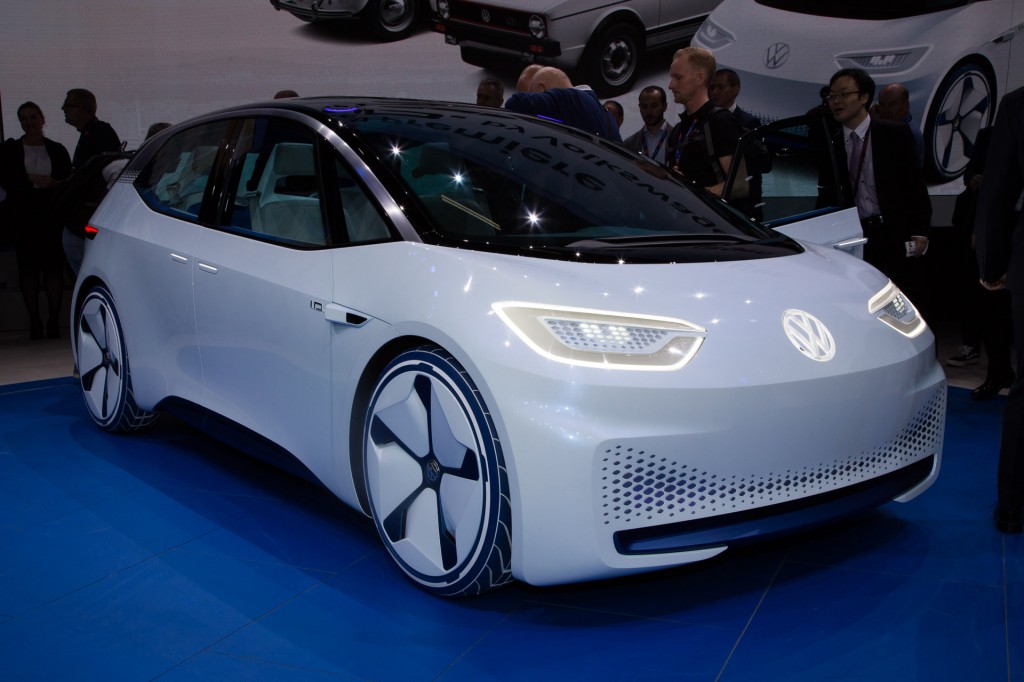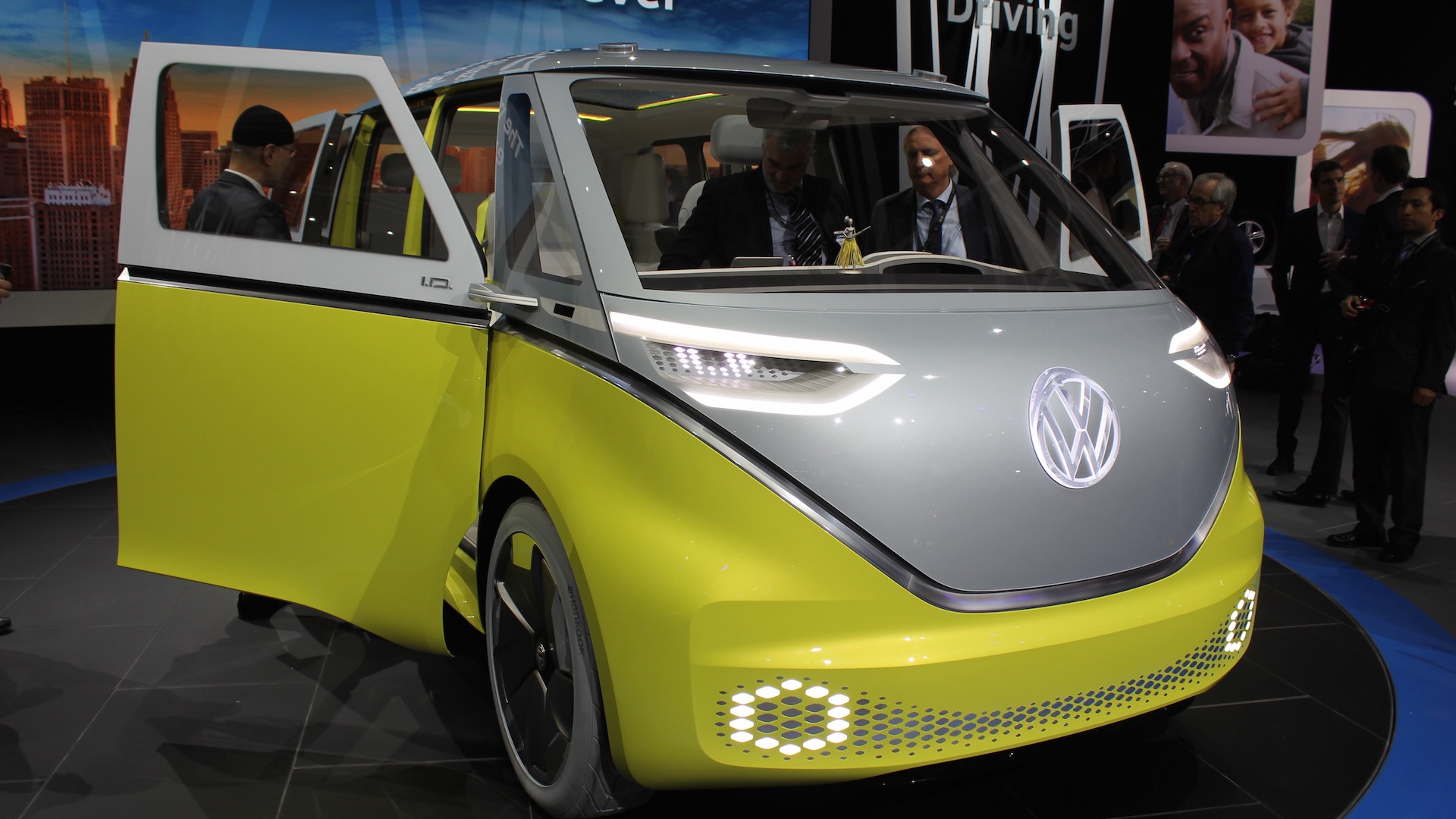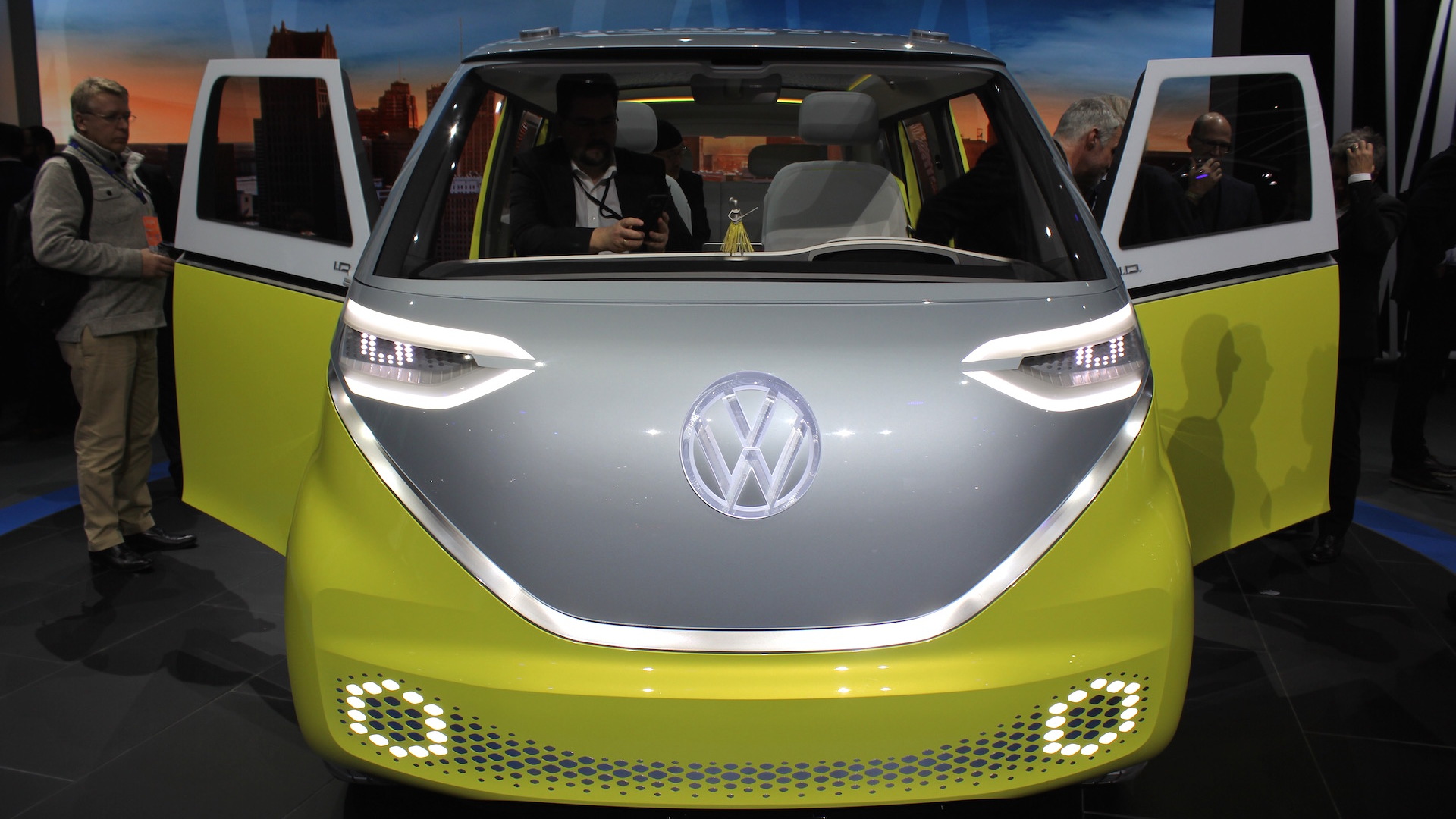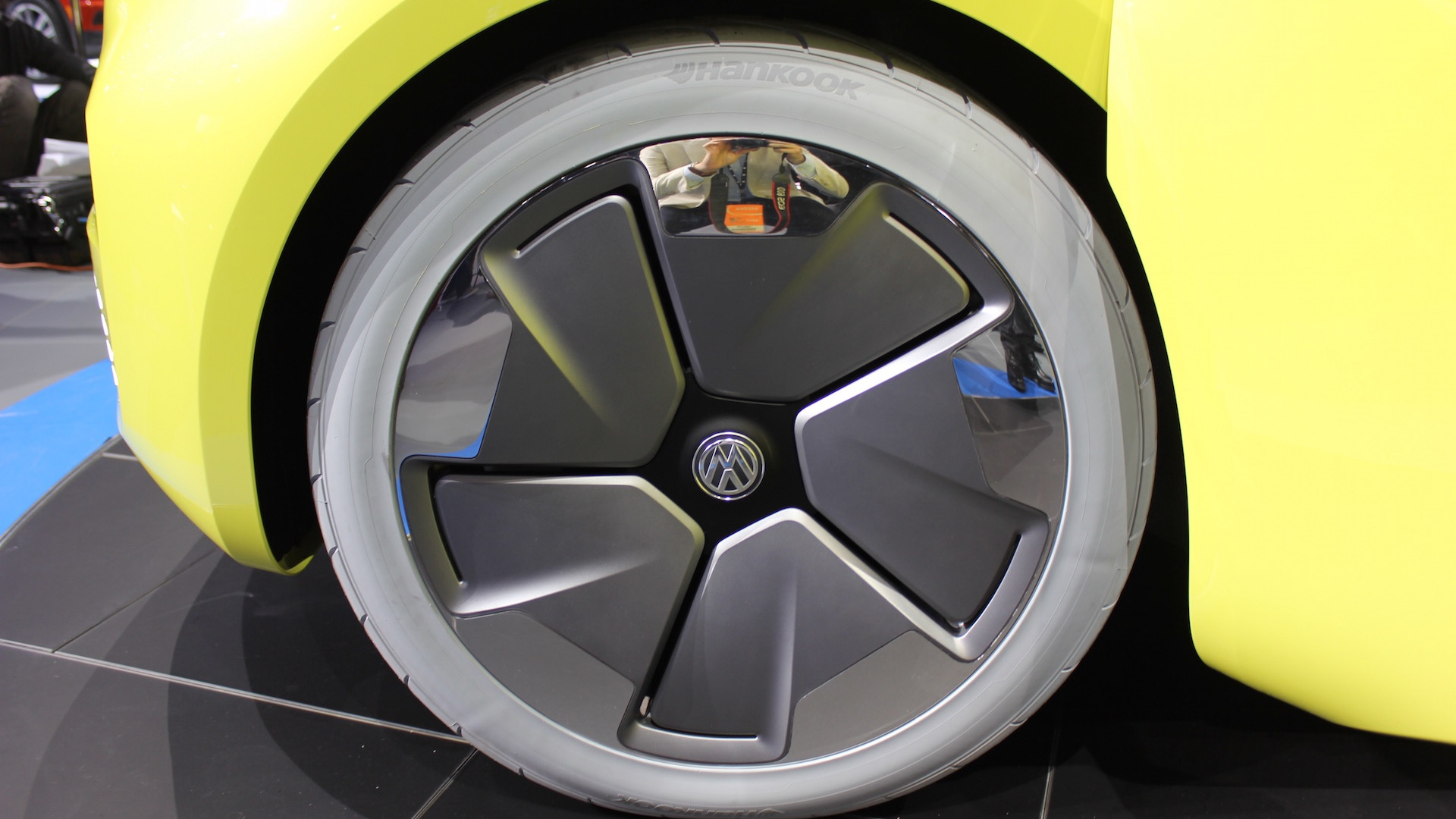If you pronounce the word "buzz" with a German accent, it sounds like "bus"—which is almost surely why VW's second all-electric concept vehicle is called the Volkswagen ID Buzz.
It's the latest in a series of concept studies for a modern-day Microbus, with stylistic nods to the classic Type 2 bus launched 65 years ago.
It's one of the few all-electric concept cars at this year's Detroit auto show, which is heavy on SUVs and utility vehicles.
DON'T MISS: Volkswagen ID: all-electric concept car at Paris Motor Show
The VW ID Buzz concept is built on the company's battery-electric MEB architecture, giving it very different proportions to early new-Microbus concepts powered by gasoline engines.
In a package that's a bit more than 16 feet long, and about 6-and-a-half feet wide and tall, the ID Buzz has up to eight seats and the interior volume of a larger minivan like a Honda Odyssey or Chrysler Pacifica.
Its proportions are in line with those of the Volkswagen ID concept for a compact hatchback electric car that was shown at last fall's Paris Motor Show.

Volkswagen I.D. Buzz Concept
The front and rear overhangs are very short, with the windshield pushed far forward and the bulk of the interior volume available for passenger and cargo use.
The designers moved the heating and air-conditioning equipment from the usual site behind the dash into what would have been an engine compartment up front.
That gives a much lower dash that's further forward than in any car with a front engine, with a single large central touchscreen for virtually all controls and any operating data not provided to the driver in a head-up display.
ALSO SEE: Electric VW Microbus concept to appear at Detroit Auto Show
Large 22-inch wheels disguise the visual height of the ID Buzz, which is compounded by having a flat lithium-ion battery pack sitting under the floorboards.
A character line circles the shape, and the window openings are tall, which along with a glass roof make the cabin exceptionally bright and easy to see out of.
The front "face" of the ID Buzz concept has the characteristic headlights—VW design chief Klaus Bischoff called them "eyes"—and a lit VW badge that form the car's face on a flat panel sans grille opening, just like the original Microbus.

Volkswagen I.D. Buzz Concept
And slim horizontal taillights work to strengthen an impression of this tall, boxy concept's width. Height is further de-emphasized by a two-tone treatment that uses a darker color for the panels below the beltline.
But this is just the latest of several new Microbus concepts dating back 15 years, from the New Microbus in 2001 through the Bulli in 2011 to last year's Budd-e all-electric concept.
Asked why Volkswagen has come out with another one, Bischoff said that the shape and proportions of previous designs had been compromised by the need to accommodate a combustion engine.
CHECK OUT: Volkswagen Budd-e Concept: 373-Mile, All-Electric Van Signals The Future
With the battery under the floor and compact front and rear electric motors between the wheels, he said, an all-electric powertrain gave the designers the freedom to rethink the entire packaging and proportion of the one-box shape.
"Now," he said, "we have the proportions right."
Technical specs for the concept were sparse: it's envisioned to have a 110-kilowatt-hour lithium-ion battery pack, a 150-kilowatt (200-horsepower) electric motor powering each set of wheels, and a total power output of 275 kw (370 hp).

Volkswagen I.D. Buzz Concept
Acceleration is projected at 5.0 seconds for 0 to 60 mph for the version with all-wheel drive.
Range is projected to be 450 to 600 kilometers (280 to 375 miles) on the European test cycle, or 200 to 270 miles using U.S. EPA testing.
And VW mentions DC fast charging at up to 150 kilowatts, a prospect likely to be considerably more real by the time any production version of the VW Buzz might launch than it is today.
The ID Buzz concept is significantly larger than the first Volkswagen ID concept last fall, which offered the passenger volume of a mid-size sedan in the footprint of a compact hatchback.
But it still uses the same set of MEB building blocks underneath, which VW suggested shows the versatility of its dedicated electric-car architecture.
The battery of the Buzz is significantly higher capacity, at 110 kwh, than the 60 kwh of the ID hatchback. But the pack units have the same side-to-side dimension, allowing economies of scale for manufacturing.

Volkswagen I.D. electric car concept
Could you see an all-electric VW "MicroBuzz" in a Volkswagen showroom one day? Yes, Bischoff said—but not until 2022 at the earliest.
The Volkswagen ID hatchback will come first, by 2020, since compact hatchbacks (i.e. the Golf) are by far VW's best-selling vehicles, at more than 1.1 million globally last year.
While the designers would clearly like to see the car in production and, he said, "management of course is in love" with it, show attendees have to indicate their enthusiasm as well.
In other words, Volkswagen's business case for building the Buzz will depend on the buzz it gets.
For all the latest on green-car debuts at this week's event, head over to our Detroit auto show news page.
_______________________________________



















